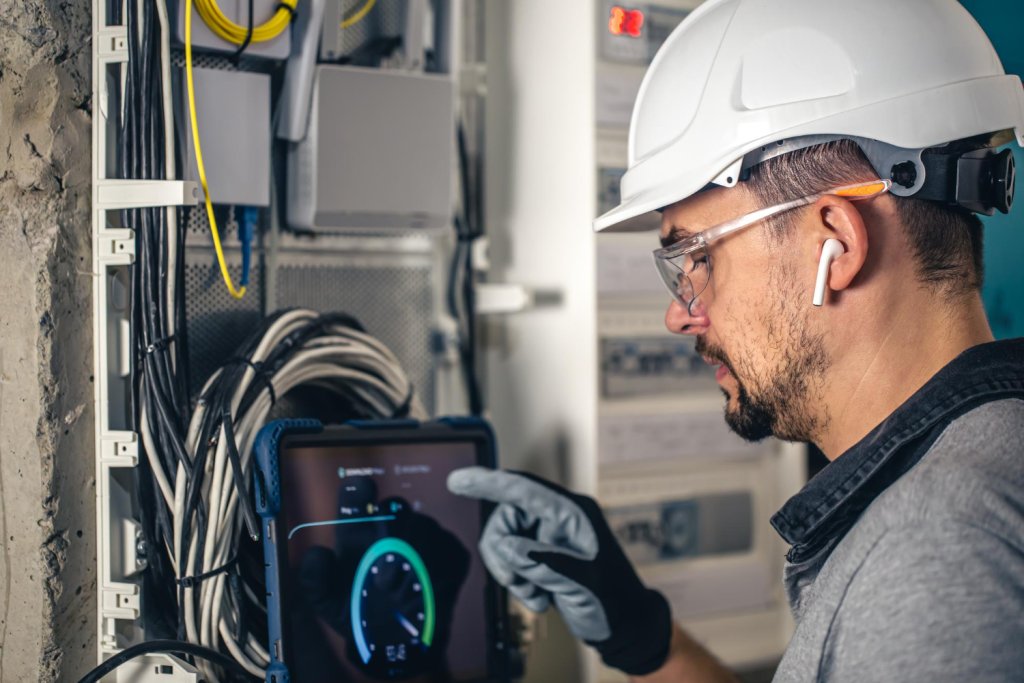Computer Vision and Image Analysis
Computer vision is a field within artificial intelligence focused on enabling machines to acquire, process, and interpret visual information, mimicking the human visual process. Through complex algorithms, computer vision makes it possible to extract relevant features from images or video sequences—from object detection to facial recognition. This process is essential across various industrial sectors, such as automation and medicine, as we describe here, by enabling a deeper understanding of the environment and more efficient decision-making.
At Pixelabs, we apply computer vision solutions to optimize industrial processes: from quality control of parts on production lines, to detecting people at customer service points, and even automating material classification in recycling plants. Each of these cases shows how technology can help make decisions that are faster, more accurate, and based on real data.
Did you know it’s possible to analyze more than just the visual?
Like images, sound carries a huge amount of environmental information. Although it is a different type of signal, its analysis allows us to identify events, detect anomalies, and anticipate problems—especially in industrial environments.
While image analysis relies on the interpretation of visual information captured by cameras, sound analysis works with variations in air pressure (acoustic waves) to identify relevant patterns. Both approaches share the same goal: to interpret complex data and extract useful information—just from different types of signals.
What Is Sound and How Is It Characterized?
Sound is a form of energy generated by vibrations that travel through a medium, such as air. These vibrations produce acoustic waves that can be analyzed to understand the environment. Some of the most relevant characteristics of sound include:
- Frequency: Indicates how many cycles per second a sound wave has.
- Pitch: Determined by the wave’s frequency. The higher the frequency, the higher the perceived pitch.
- Amplitude: Related to volume. A greater amplitude means a louder sound.
- Intensity: Helps distinguish between soft and loud sounds.
- Timbre: The quality that allows us to differentiate between sound sources, like two instruments playing the same note.
- Duration: Refers to how long a sound wave lasts, which affects how we perceive its presence or length.
Analyzing these characteristics enables sound classification, irregularity detection, and automated decision-making in environments where sound is a key signal.
Industrial Applications of Sound Analysis

Acoustic analysis is becoming a key tool in industrial applications, especially in predictive maintenance tasks. For example, with acoustic sensors, it’s possible to monitor the sound emitted by engines or mechanical systems and detect deviations that may indicate upcoming failures. Some concrete applications include:
- Automotive engines: Small sound variations can reveal issues like oil shortages or internal wear. [1]
- Industrial environments: Ultrasonic waves produced by cracks or fissures can be captured and analyzed to prevent failures before they occur. [2]
- European projects: This technology is used to develop smart sensors that monitor machine status and alert when something’s wrong. [3, 4]
- Valve monitoring: Continuous analysis of sound patterns helps detect internal wear before serious malfunctions. [5]
- Nuclear energy sector: Studies show that leaks or defects in safety valves can be detected via acoustic emission techniques combined with classification algorithms, allowing for early intervention without disassembly. [6]
All these cases highlight the value of sound as a critical information source in industrial environments—especially when combined with AI algorithms capable of interpreting complex acoustic patterns in real time.
Image and Sound Processing
While image processing remains one of the most widely used technologies in automation and quality control, sound analysis is emerging as a powerful complement. Combining both disciplines opens new possibilities: more complete systems capable of perceiving and interpreting their environment through multiple senses—much like today’s multimodal LLM models, which integrate text, images, and audio.
This multisensory integration is already leading to advanced solutions in sectors such as surveillance, where systems combining video cameras and microphones can detect risk situations more reliably than vision-only systems. Some use cases include:
- Public or industrial environments: These systems can identify unusual events like screams, explosions, or breaking glass, combining auditory cues with visual input for more precise, contextual alerts. [7]
- Voice recognition technologies: The fusion of image and sound enhances audio-visual speech recognition (AVSR), integrating sound with real-time lip reading. This has shown significant improvements in noisy environments where audio alone isn’t enough for accurate speech comprehension. [8]
- Autonomous mobility and transportation: Vehicles equipped with cameras and microphones can recognize not only visual signals but also critical sounds like sirens or horns, improving real-time decision-making.
- Industrial inspection and precision agriculture: Drones equipped with computer vision and acoustic sensors simultaneously analyze the visual and acoustic condition of crops, machinery, or infrastructure—enabling faster diagnostics and action.
In all these cases, combining image and sound allows tech systems not only to “see” or “hear,” but to truly understand their environment in a richer, more contextual way—bringing them closer to human-like multisensory perception.
References
- https://www.researchgate.net/publication/382563274_Engine_Fault_Detection_by_Sound_Analysis_and_Machine_Learning
- https://www.agenciasinc.es/Noticias/Un-nuevo-sensor-diagnostica-averias-en-maquinaria-industrial-por-el-sonido
- https://cordis.europa.eu/article/id/239883-sound-software-for-fault-detection-in-machinery/es
- https://cordis.europa.eu/article/id/345106-sensors-and-ai-listen-in-on-the-health-of-industrial-motors/es
- https://www.researchgate.net/publication/366795551_Acoustic-Based_Machine_Condition_Monitoring-Methods_and_Challenges
- https://www.researchgate.net/publication/229376319_A_study_of_the_characteristics_of_the_acoustic_emission_signals_for_condition_monitoring_of_check_valves_in_nuclear_power_plants
- https://www.researchgate.net/publication/4235815_A_Multimodal_Audio_Visible_and_Infrared_Surveillance_System_MAVISS
- https://www.mdpi.com/1424-8220/23/4/1834